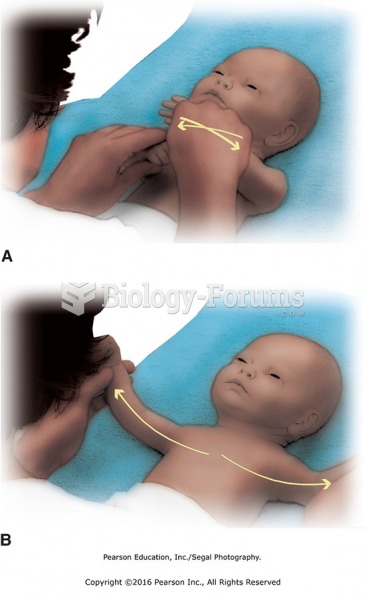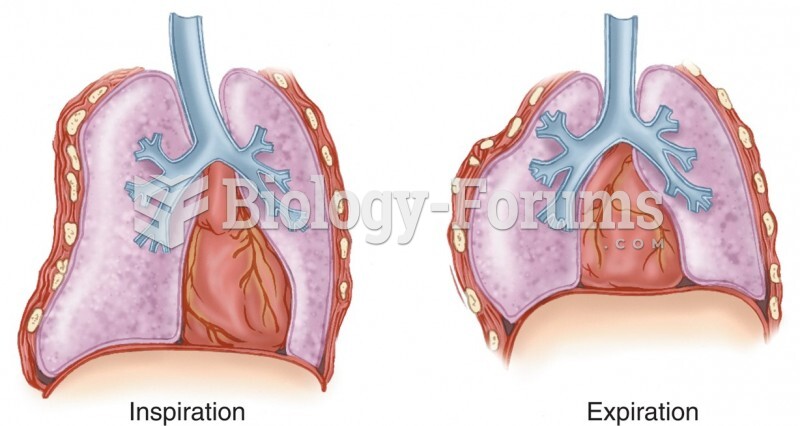|
|
|
Excessive alcohol use costs the country approximately $235 billion every year.
If all the neurons in the human body were lined up, they would stretch more than 600 miles.
Acute bronchitis is an inflammation of the breathing tubes (bronchi), which causes increased mucus production and other changes. It is usually caused by bacteria or viruses, can be serious in people who have pulmonary or cardiac diseases, and can lead to pneumonia.
Inotropic therapy does not have a role in the treatment of most heart failure patients. These drugs can make patients feel and function better but usually do not lengthen the predicted length of their lives.
About 60% of newborn infants in the United States are jaundiced; that is, they look yellow. Kernicterus is a form of brain damage caused by excessive jaundice. When babies begin to be affected by excessive jaundice and begin to have brain damage, they become excessively lethargic.
 Apply knee to chest stretch for posterior hip and leg muscles. Facing the table directly, place one ...
Apply knee to chest stretch for posterior hip and leg muscles. Facing the table directly, place one ...
 Using the palm, apply oil with butterfly strokes across the chest. Alternate hands and move across ...
Using the palm, apply oil with butterfly strokes across the chest. Alternate hands and move across ...





